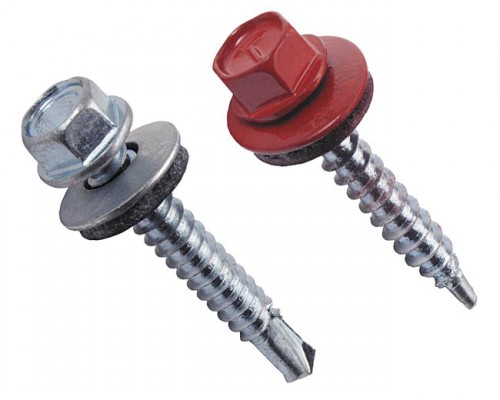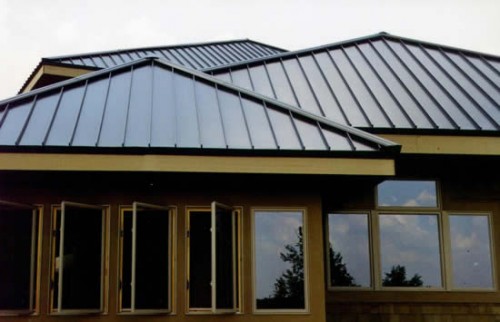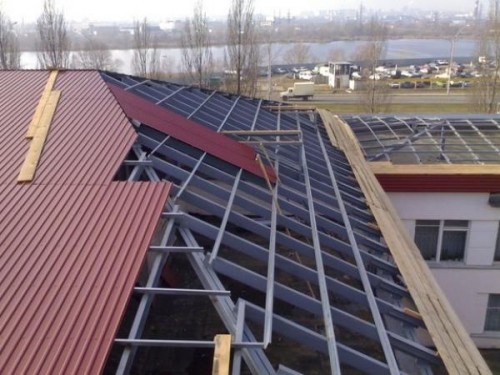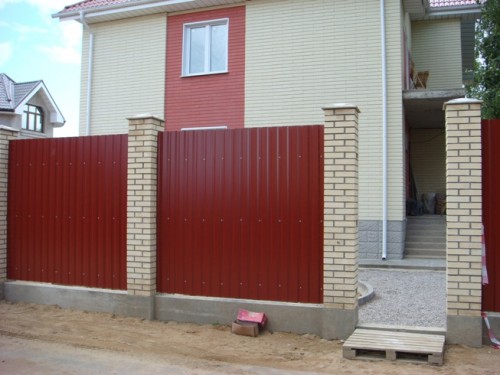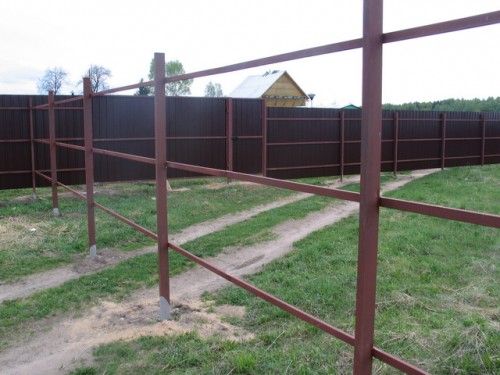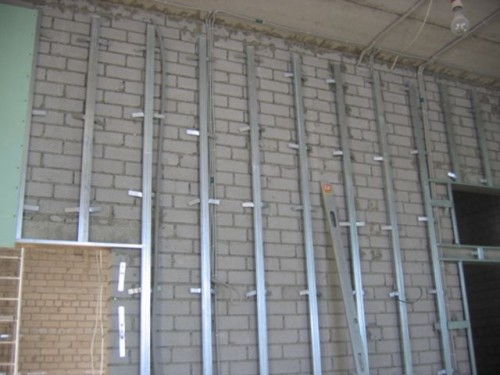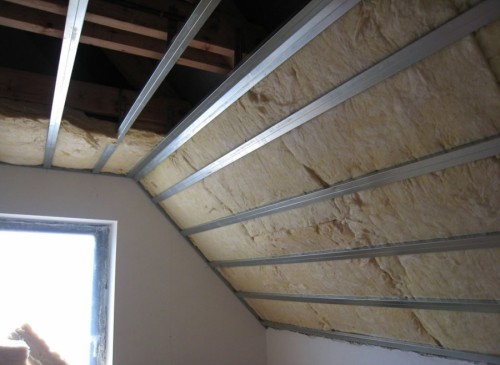
How to mount professional flooring Building materials
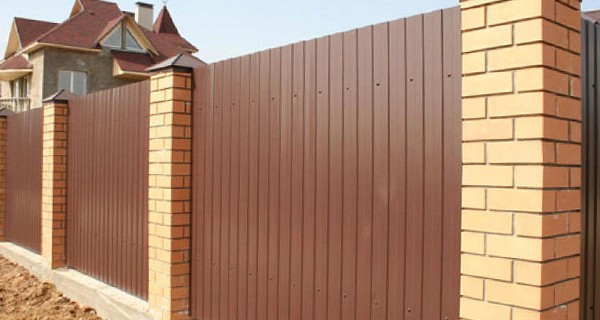
Professional flooring is a universal material that has a rather wide scope of application. It is usually used as a roof covering, for the arrangement of floors, fences, ventilated facades of buildings, as well as in the construction of non-residential premises, such as garages, various economic buildings, canopies, etc. What is his advantages over other materials and how to fix the professional flooring? - Here are the main questions for which you have to answer further.
Content
Types of professional flooring and its dignity
Profile presents with a wall or roofing profile, which has a different depth of profiling. To date, the most popular among consumers is a trapezoidal profile professional flooring, which is produced from galvanized steel with a polymer coating or without it.
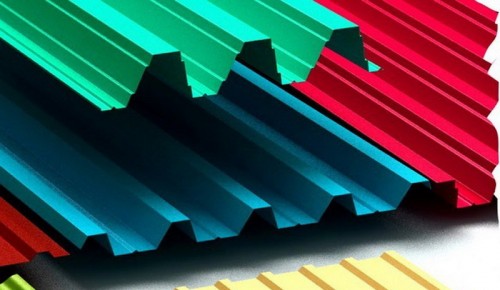
The main advantages of this building material are considered as:
- Absolute environmentally friendly safety.
- Relatively low weight.
- Durability and anti-corrosion resistance.
- A wide variety of color gamut and sizes.
- Ease of installation work, which are available to almost everyone, including those who do not have construction skills.
Features of the installation of professional flooring
Despite the fact that professional flooring as a building material is quite easy to install, it is still necessary to get acquainted in advance with some features of working with it. First, the choice of the fastening element depends on the type of surface to which the professional clothes will be mounted.
- If this is a wooden doom, then use conventional self-tapping screws with rubber gaskets that guarantee water resistance of the compounds.
- For metal surfaces, special self-tapping screws are used with mini-drill.
- In addition, ordinary nails cannot be used in working with professional sheets, as well as apply welding or grinder, which can be subsequently corrosive metal.
- The consumption of fastening elements is calculated in view of the fact that one square meter of the proflift takes approximately 5-8 screws.
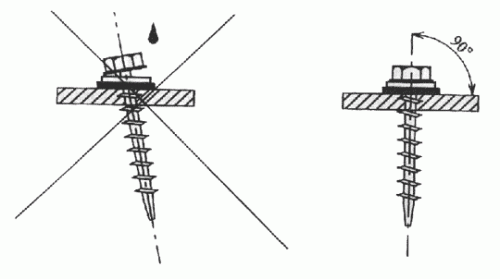 Consider in more detail the stages of the fastening of the professional flooring to different surfaces.
Consider in more detail the stages of the fastening of the professional flooring to different surfaces.
Fastening professional flooring
Fastening Professor on the Roof
- The fasteners of the professional flooring produce to a wooden crate, ranging from the bottom of the roof, forming a small ot (about 4 cm) to protect against precipitation, and gradually rising up.
- First, the sheets are placed in the order in which they will be mounted, forming certain overlaps between them (about 20 cm). The greater the angle of inclination of the roof, the less the allen.
- If the angle of inclination of the roof is completely small, up to 12 degrees, then in order to give greater strength to the fasteners of sheets, special silicone sealants are used, which climb the resulting vertical and horizontal gaps.
- Fastened brawlings with self-drawing strictly perpendicular to the place of adjustment of the wave to the surface of the crate. At the same time, the skate screws differ in length from the self-samples used directly for the roof.
- Screw them with screwdrivers or drills at low speed.
- If the screw is done manually, then it is necessary to calculate the effort well in order not to damage the insulation and ensure the reliability of the attachment.
Fastening professional flooring
The fastening of corrugated fences is different.
- First, it is calculated to calculate the required number of sheets of professional flooring, which depends on the perimeter of a fixed area and the width of one professional leaf, taking into account the adolescents.
- And also carry out the marking of the territory on which the installation of the fence is assumed.
- Then he drill holes for support pillars, after which they are mounted crossing, at least three rows, which will serve as a crate for metal sheets.
- Next, go directly to the fastening of this material, starting from the end and, naturally, the brass. However, it should be small, just one wave.
- Self-tapping screws or special rivets can be used as fasteners, which are screwed into the places of the greatest fit of the proflist to the fence frame.
- Surplusing material can be trimmed with metal with small teeth with small teeth, and the edges are treated with a special anti-corrosion composition.
- If you wish to improve the aesthetic type of fence, you can use special nicknames that close the corners and ends. They are also fastened with rivets every 30 centimeters.
Fastening Professional Stand
The process of fastening this material to the walls is almost identical to how the rigging of the proflists is taken to the fence. However, there are some differences in the design of the crate.
- Unlike the fence, the frame for which is crosslinked, for attaching to the wall, it is necessary to make a holistic frame from the rectangular profile pipe, which would have small gaps for ventilation.
- For these purposes, the use of a welding machine is allowed. At the same time, after welding, the surface of the professional knots must be treated with a special anti-corrosion composition, which increase the cost of assembly work.
Fastening of the ceiling
To make the fastening of this material on the ceiling, it is important to take into account the need for laying various engineering communications.
- To do this, there is a special type of fastening in the form of a V-shaped brackets, which is very convenient in the installation, as it allows you to adjust it without any problems depending on the form of profiles.
- The brackets together with the profrehets are attached to the pins in specially prepared threaded holes.
You can clearly see the process of fastening the professional flooring on video:




